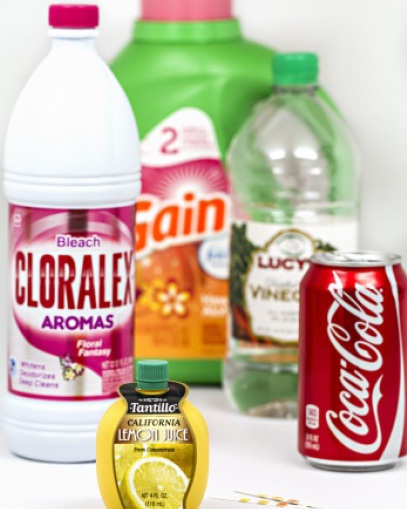





Published on Feb 13, 2025
The objective: The goal of this project is to introduce students to the concepts of pH and chemical reactions involving color. By using a universal indicator students will test various household chemicals to determine their pH.
What are some acidic household chemicals?
What are these chemicals used for?
What are some basic household chemicals?
What are these chemicals used for?
The attention grabbing color changes is one way to keep kids interested in science. It's scientific magic. The most common color changing reaction is chemically measuring pH. pH is a scale, which tells us the amount of hydrogen ions (H+) or hydroxide ions (OH-) are present in a solution. Why is this important? To keep it simple, H+ and OH- are highly reactive ions that can induce or speed up chemical reactions.
Our bodies have a pH range of 6.4 - 7.0 on a scale of 1.0 (acidic) to 14 .0 (basic). A pH of 7 is neutral meaning the amount of H+ and OHions are in equal amounts or not present. Since these ions are highly reactive we can observe color changes when certain chemicals are added to acids and bases. Universal indicators are a mixture of chemicals that react with H+ and OH- ions to produce a color change. In this experiment students will test various household chemicals using a universal indicator.

Universal indicator
Household chemicals
1. Read the instructions and color chart of your universal indicator. Perform all testing in the presence of an adult in a laboratory or in the kitchen, near the sink in the event any acidic or basic chemical comes in contact with your skin. Wash it off immediately.
2. Gather your household chemicals.
1. Look in the kitchen: 1. Vinegar 2. Lemon Juice 3. Sodas 4 . Ammonia 5. Dish Soap 2.
Look in the laundry room: 1. Bleach 2. Laundry detergents
3. Look in the bathroom/medicine cabinet: 1. Antacids 4 . Test other chemicals around the house. Be sure to ask an adult if the chemical is safe to test.
3. Test each of your chemicals. Follow the instructions to your universal indicator.
4 . Record the color for each chemical.
5. What pH does each color indicate?
6. Is the chemical an acid or a base?
7. What is the purpose of this chemical?
1. What does its acidic, basic, or neutral pH has to do with its purpose?
8. Organiz e your data into a chart.

http://www.epa.gov/acidrain/measure/ph.html
http://www.chem4 kids.com/files/react_acidbase.html
http://www.onlinesciencemall.com/Shop/Control/Product/fp/SFV/30852/vpid/1829806/vpcsid/0/rid/126318
“Focusing on Preservatives: How They Keep Food Fresh” Science Daily, 2002
“How Food Preservation Works” by Marshall Brain, 2006